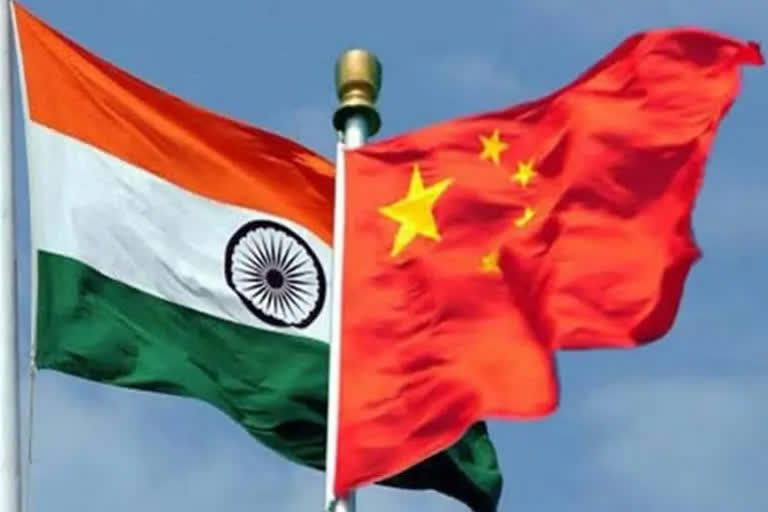Hyderabad: The India-Chinese military standoff in Eastern Ladakh erupted on May 5, 2020, following a violent clash in the Pangong Lake area. It is after this clash the two sides enhanced their deployment of soldiers as well as heavy weaponry.
Twenty Indian soldiers were killed in the fierce seven-hour hand-to-hand combat with Chinese troops on June 15, 2020, in Galwan Valley. The incident marked the deadliest clash between India and China in decades.
However, it was only on February 19 this year, the People's Liberation Army (PLA) officially acknowledged for the first time that five Chinese military officers and soldiers were killed in the Galwan Valley clash.
As a result of a series of military talks, on February 21, both sides announced completion of pull-back of troops from the Pangong Tso Lake and said they will work to cut tensions on other parts of the border.
On July 12, Chinese soldiers protested the birthday celebrations of Tibetan spiritual leader Dalai Lama in the Demchok area of Ladakh. The Chinese troops showed banners and posters to the Indian villagers who were celebrating the birthday of the Dalai Lama.

On August 1, a hotline was established between the Indian Army in Kongra La, North Sikkim and China's People's Liberation Army (PLA) at Khamba Dzong in the Tibetan Autonomous Region. In a statement, the Army said, "The Armed forces of the two countries have well-established mechanisms for communication at ground commanders level. These hotlines in various sectors go a long way in enhancing the same and maintaining peace and tranquillity at the borders."
Again, after the 12th round of military talks, India and China announced completion of disengagement in the area of Gogra in eastern Ladakh on August 6. A statement issued by the Indian Army said the disengagement process was carried out over August 4 and 5 and the troops of both sides were in their respective permanent bases.
A report titled "Military and Security Developments Involving the People's Republic of China 2021" released by Pentagon in the first week of November said the Chinese military installed a fibre optic network in remote areas of the western Himalayas region, during the height of the border standoff with India in 2020, for increased protection from foreign interception.
The report said China built a large 100-home civilian village inside disputed territory between its Tibet Autonomous Region and India's Arunachal Pradesh in the eastern sector of the Line of Actual Control (LAC). However, a few days later, sources in India's security establishment sought to downplay the report, saying it is in a territory controlled by the Chinese military for nearly six decades. They also said that the village has been built by China in an area that was occupied by the People's Liberation Army (PLA) after overrunning an Assam Rifles post in 1959.
China has continued taking "incremental and tactical" actions to press its claims at the LAC despite its ongoing diplomatic and military dialogues with India to reduce border tensions, the US report said.
By November- mid, fresh satellite images apparently showed China has built a second village along the disputed border in Arunachal Pradesh. However, the Indian Army later stressed the “location was north of the Line of Actual Control (LAC)” in Chinese-held territory.
Responding to a question at a panel "Greater Power Competition: The Emerging World Order" at the Bloomberg New Economic Forum in Singapore on November 19, External Affairs Minister S Jaishankar on Friday said that India and China are going through a bad phase in their relationship because of Beijing's actions and violation of agreements between the two neighbouring nations.
"But the issue is where is India positioned - some of it is about China because - we are neighbours and going through a particularly bad patch of our relationship because they have taken a set of actions and violation of agreements for which they still don't have a credible explanation and that indicates some rethink about where they want to take our relationship, but that's for them to answer," he added referring to the Eastern Ladakh border clash with China.
Last month, India also expressed concerns over the buildup by the People's Liberation Army opposite the Eastern Ladakh sector. News agency ANI cited sources as saying that there are reasons for concern for the Indian side as the Chinese are building new highways and connecting roads, constructing new habitats and settlements near the Line of Actual Control and have deployed heavy weaponry including missile regiments on their side.
The two nuclear-armed countries are still continuing with negotiations towards complete disengagement. The 13th round of commander-level talks between the Indian and Chinese militaries was held on October 10 at the PLA garrison at Moldo, across India’s Chushul border station. An Indian statement issued later pointed out that the meeting did not result in resolution of the remaining areas as the “Chinese side was not agreeable and also could not provide any forward-looking proposals”. The two sides are likely to hold the 14th round of talks in the second half of December.



